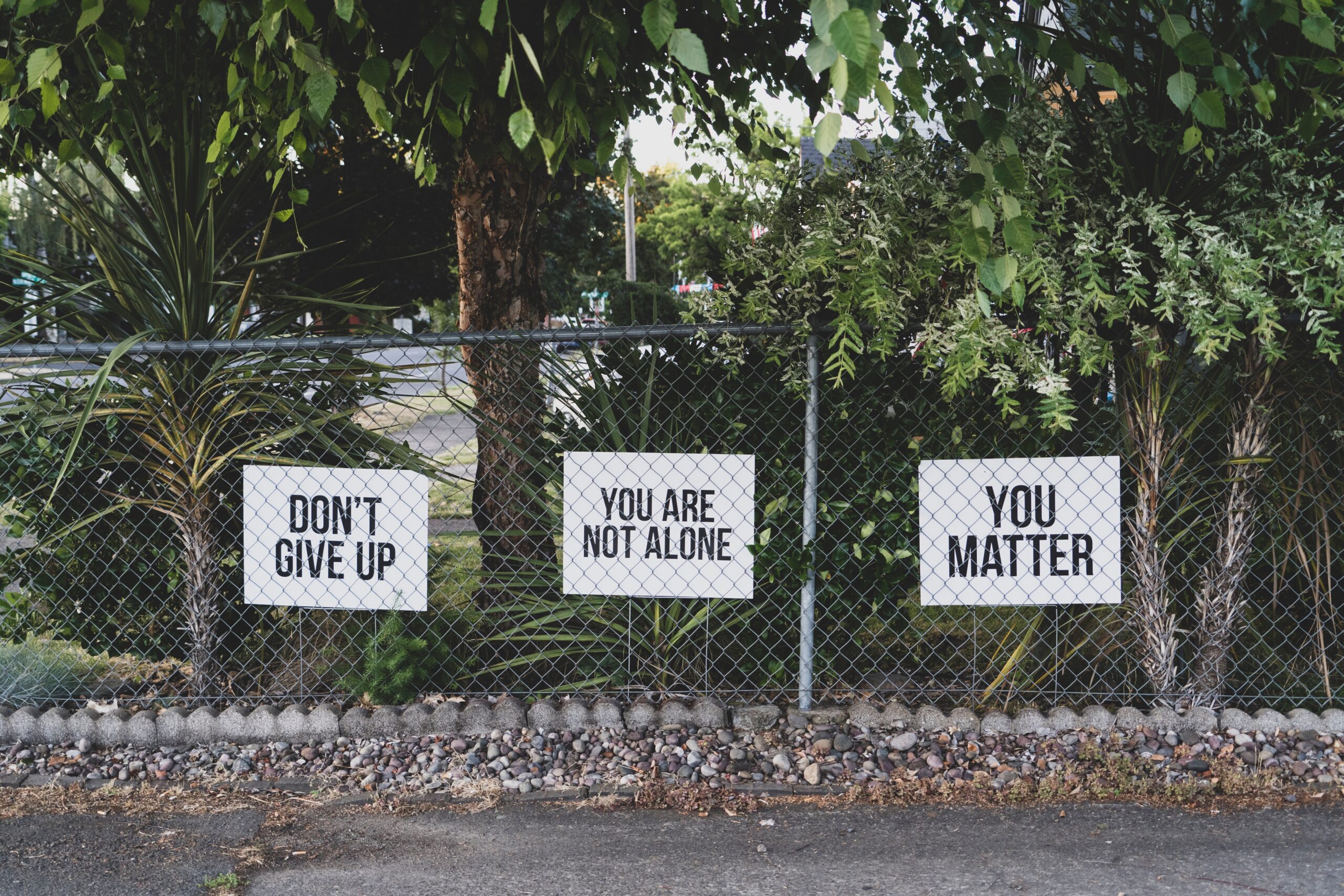September is Suicide Prevention Awareness Month. During this time, it is important to raise awareness of this stigmatized, and often taboo, topic. We use this month to shift public perception, spread hope and share vital information to people affected by suicide. Friends, families, and individual people should have access to the resources they need to discuss suicide prevention and to seek help.
Suicidal thoughts, much like mental health conditions, can affect anyone regardless of age, gender or background. In fact, suicide is often the result of an untreated mental health condition. Suicidal thoughts, although common, should not be considered normal and often indicate more serious issues.
Suicide and Domestic Violence
Richard McKeon, PhD, chief of the suicide prevention branch at the U.S. Substance Abuse and Mental Health Services Administration (SAMHSA), says that survivors of intimate partner violence are twice as likely to attempt suicide multiple times.
Physical and psychological abuse by a partner may trigger suicidal thoughts. However, other underlying factors are relevant, which concern individual and social issues. If a person develops depression or posttraumatic stress from abuse, these mental conditions may contribute to suicide and suicide attempts. For example, some abused women with suicidal tendencies indicate that they still deal with the psychological effects of sexual, emotional, or physical maltreatment experienced as a child. Combined with factors of low esteem, these psychological effects can trigger suicidal thoughts when victims blame themselves for their abuse. Research also shows that females in domestic violence situations are more likely to attempt suicide when low levels of social support exist. This includes friends and family networks. With all factors, the likelihood of suicide increases when victims use drugs as a coping mechanism.
- Female victims of domestic violence have eight times the risk for suicide compared with the general population.
- Fifty percent of battered women who attempt suicide will perform subsequent attempts.
- Married females experience lower suicide rates compared with single females; however, if domestic violence is present in the marriage, the risk of suicide increases
- If a pregnant woman is a victim of domestic violence, the risk of suicide increases.


Suicide and Sexual Assault
Survivors of sexual assault also face a much higher risk of suicidal feelings.
Research has shown that survivors of sexual violence are more likely to be diagnosed with disorders like Major Depressive Disorder and Post Traumatic Stress Disorder. Both diagnoses are two that have the most impact on stress and anxiety, only falling short to the anxiety disorders. When there is a presence of severe stress and anxiety, it is much easier to experience intrusive suicidal thoughts and contemplation of suicide. According to statistics, over 1/3 of women who have experienced sexual trauma have thought about suicide.
Studies reveal that survivors whose first assault occurred before the age of 16 were at an even greater risk, with suicide attempts occurring three to four times more than in those assaulted after that age.
- More than 1/3 of women rape survivors have contemplated suicide at some point after their assault.
- 16 percent of rape victims have attempted suicide.
- Survivors of sexual assault are 10 times more likely to attempt suicide than those who haven’t experienced sexual assault.
- 94 percent of women who are raped experience symptoms of post-traumatic stress disorder (PTSD) during the two weeks following the rape.
- Approximately 70 percent of rape or sexual assault victims experience moderate to severe distress, a larger percentage than for any other violent crime.
However, suicide, just like sexual and domestic violence, is preventable. Health organizations and experts uniformly agree that two of the most powerful mechanisms to prevent suicide are educating yourself about the warning signs and understanding how to support a friend/loved one.
How can I help someone who is suicidal?
According to the National Alliance on Mental Illness (NAMI), these are the best ways to approach a friend or family member who may be experiencing suicidal thoughts.
Offer Steadfast Support
If your friend is experiencing suicidal ideation, that means they’re hurting immensely — and they likely want to talk about it and feel heard. You can show your support by listening and giving them your empathy and compassion. It’s important to express empathy and understanding when someone is sharing these difficult emotions with you.
A few examples of compassionate statements:
- “I’m so sorry you’re going through this.” It’s important to validate what your friend is feeling and experiencing. In addition, this statement shows that you care for and empathize with them.
- “Can I bring you dinner? Would you like it if I came over?” Instead of asking if there’s anything you can do, think of a couple specific things that you could do to help or support your friend.
- “You mean so much to me. I can’t imagine life without you.” Take a moment to let your friend know just how much you love and care for them. You might even remind them of a funny or heartwarming memory. Be sure to do so in a calm, non-aggressive way.
- “I know that you’re in pain.”

Validating how your friend is feeling and reiterating to them that you are there to help however you can let them know that they are not alone or wrong for feeling this way.
Ask Questions
After listening to your friend, it’s then time to take a more active role in the conversation. Sometimes, an individual’s suicidal ideation isn’t obvious — but if you do have the slightest suspicion that your friend might be suicidal or is thinking about suicide, be direct and ask them about it. Here are a few questions you could ask:
- Do you think about hurting yourself?
- Do you think about dying?
- Do you think your friends and family would be better off without you?
If they answer yes to any of these questions, then follow up with these questions:
- Do you have a plan?
- Do you have the means to carry out that plan?
Asking these questions will allow you to better gauge the severity of their symptoms and help you decide which step you need to take next.
Know When It’s Time to Act
If you are having this conversation with a friend, it’s time to reach out to somebody. However, depending on whether your friend is actively suicidal (seriously considering suicide, has a plan or the means to carry out a plan) or experiencing suicidal ideation without any intention of acting on it (passively suicidal) — you need to make sure they are getting the appropriate level of care.
Option 1: Ensure they see a therapist.
If your friend is depressed, but not actively suicidal, you should encourage them to see a therapist if they aren’t already. You can help by offering to research and make calls if they are not feeling up to finding a therapist themselves. You should also check in regularly to see how they are and make sure their symptoms have not escalated toward crisis.
Option 2: Seek immediate help.
If they convey that they are actively suicidal, you should get them help immediately. If they have a therapist or psychiatrist, call them to ask if they have a crisis plan in place or what you should do. If they don’t have a therapist, you should take them to the hospital for an evaluation.
If you are a child or teenager, it is essential that you tell a trusted adult (parent, teacher, school counselor, doctor, church leader, family friend, etc.) — even if your friend tells you not to.
What can I do to take care of myself?
Whether it be before, during, or after both the violent experience and/or suicidal ideation, there are many different ways that you can take care of yourself. It should be noted that these are easy/simple examples of things to do when you are not in a crisis state. If you are currently experiencing suicidal thoughts please contact a close friend, family member, or the 988 Suicide and Crisis Lifeline.



Physical examples
- What does your sleep schedule look like? What can you do to help get back into a steady sleep pattern and feel more rested?
- What kind of food are you putting into your body? What food helps you feel capable of taking on the day?
- Is there any kind of movement that you enjoy? What activities can you do to help fuel your imagination or physical needs?
- How can you reset your routine? How might your routine look different with the unique circumstances in this moment? What can you do to start and/or end your day on a good note?
Emotional examples
- What do you like to do for fun? What do you have to look forward to?
- Do you like to journal? What words inspire you today?
Note: journaling does not have to be a novel of all of the day’s activities. It can be as simple as writing a mantra or three things you’re grateful for today.
- Do you have a spiritual practice that brings you joy? What do you do to relax and rejuvenate?
- Who are people that can reach out to, that you trust? What are some ways you can be with them?
- Where is a special place you can go, whether it’s alone or with others, that helps you feel comfortable and grounded?
Through answering these questions, you can create a self-care routine that is best suited for your unique experience. If you have experienced se
Options works to support victims of domestic and sexual violence by providing resources to local mental health professionals. Our team of advocates are kind, understanding, and empathetic towards individuals who have experienced mental health related problems from their abuse.
If you need any additional information, have a question, or a concern, feel free to reach out to Options at our 24-hour toll-free helpline 800-794-4624. You can also reach an advocate via text by texting HOPE to 847411 or click 24-Hour Chat with Options.
Written by Anniston Weber



